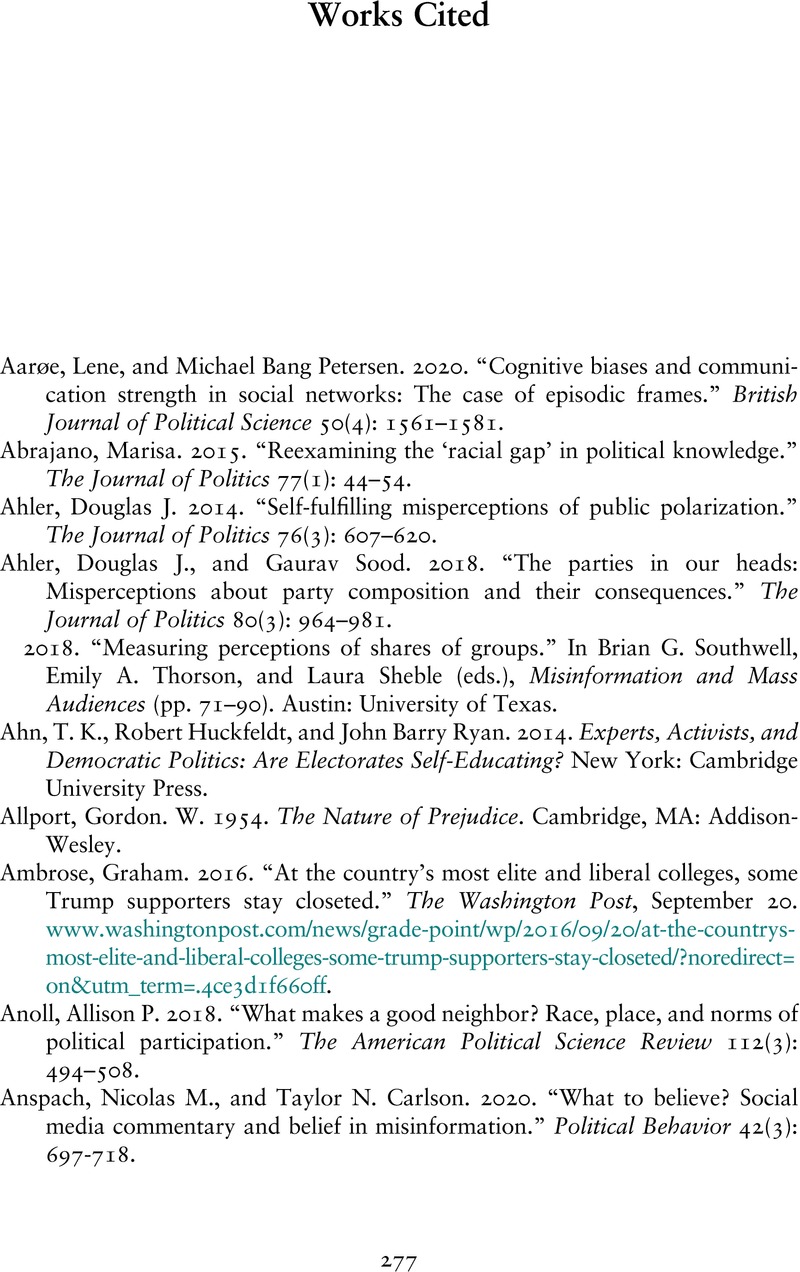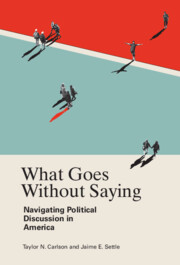Book contents
- What Goes Without Saying
- What Goes Without Saying
- Copyright page
- Contents
- Figures
- Tables
- Acknowledgements
- 1 Opening the Black Box of Political Discussion
- 2 The 4D Framework of Political Discussion
- 3 Data Collection
- 4 Detection
- 5 Decision
- 6 Discussion
- 7 [further] Discussion
- 8 Determination
- 9 Individual Dispositions and the 4D Framework
- 10 The Costs of Conversation
- Notes
- Works Cited
- Index
- References
Works Cited
Published online by Cambridge University Press: 26 May 2022
- What Goes Without Saying
- What Goes Without Saying
- Copyright page
- Contents
- Figures
- Tables
- Acknowledgements
- 1 Opening the Black Box of Political Discussion
- 2 The 4D Framework of Political Discussion
- 3 Data Collection
- 4 Detection
- 5 Decision
- 6 Discussion
- 7 [further] Discussion
- 8 Determination
- 9 Individual Dispositions and the 4D Framework
- 10 The Costs of Conversation
- Notes
- Works Cited
- Index
- References
Summary

- Type
- Chapter
- Information
- What Goes Without SayingNavigating Political Discussion in America, pp. 277 - 292Publisher: Cambridge University PressPrint publication year: 2022



